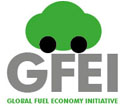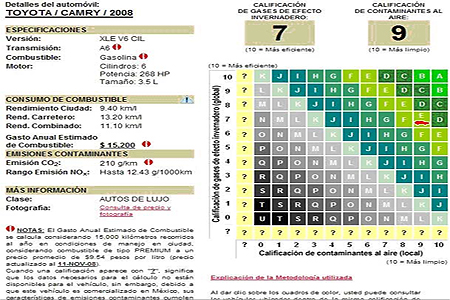
Consumer awareness campaigns
It is important that the consumer is well aware of the fuel consumption and CO2 emissions of a vehicle they may wish to purchase, whether new or used. On-line databases, as found in Mexico (see below), on-board fuel economy display information, and labels at dealerships are relatively easy ways to inform the consumer about crucial fuel consumption and economy information, and how one vehicle compares with another, similar (weight, power) vehicle. Below are three examples of consumer awareness campaigns. Some manufacturers, including Toyota Motor Corp., are now incorporating ‘eco-driving’ displays into dashboard design to improve driver behaviour and fuel savings.
EU
EU Directive 1999/94/EC (as amended by 2003/73/EC) requires new car fuel consumption and CO2 emissions data to be made freely available to consumers. Car dealerships are required to have a label showing the fuel consumption and CO2 emissions of each different model on display. Fuel consumption figures are expressed both in litres per 100 kilometres (l/100 km) and in miles per gallon (mpg). The label will list the figures achieved in urban, extra-urban and combined conditions separately.
The directive also requires manufacturers to include fuel consumption and CO2 emissions data in all brochures and printed advertisements, provided that the literature relates to a specific model of car.
Mexico
Mexico has implemented a website (http://www.ecovehiculos.gob.mx/) that allows consumers to check the fuel economy of particular vehicles. A sample from this website is shown below.
U.S.
Auto dealers are required to have copies of the gas mileage guides available on the showroom floor. This is required by federal law. The gas mileage guide for current and past years is also available online at www.fueleconomy.gov








